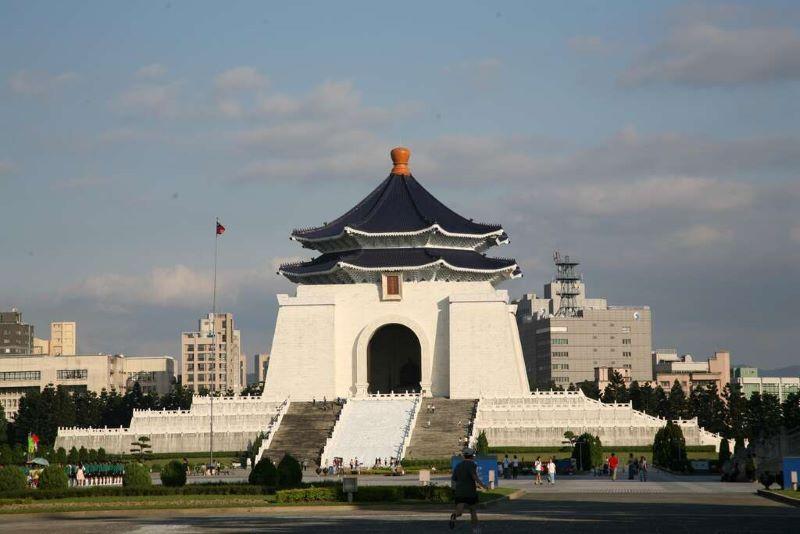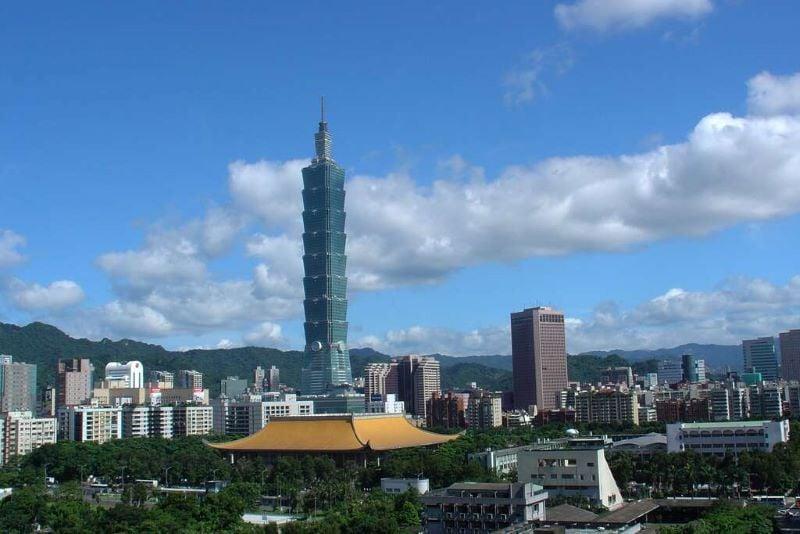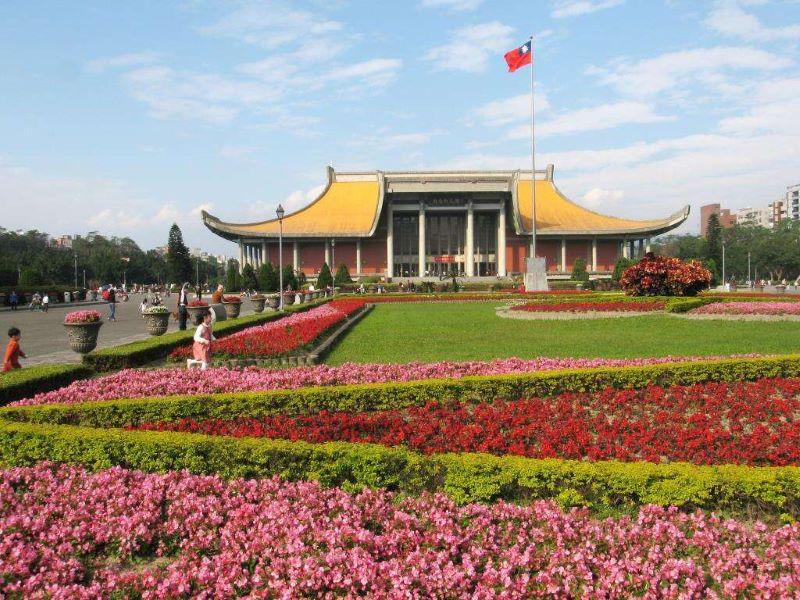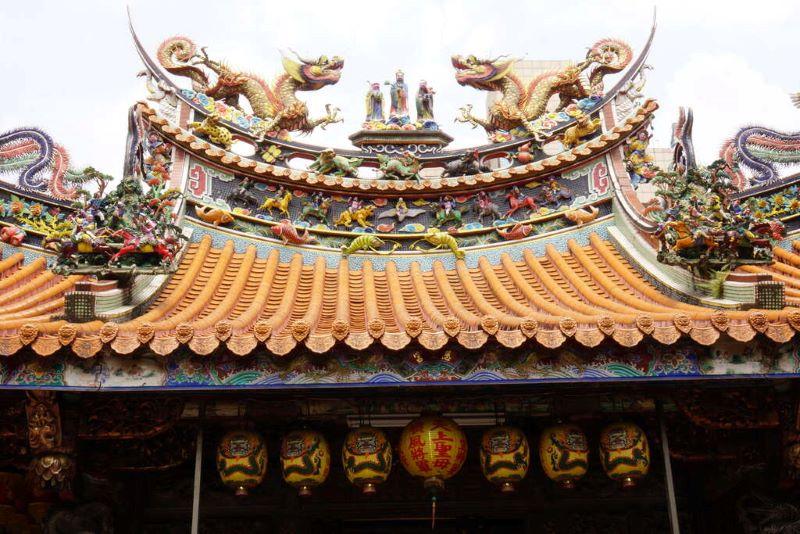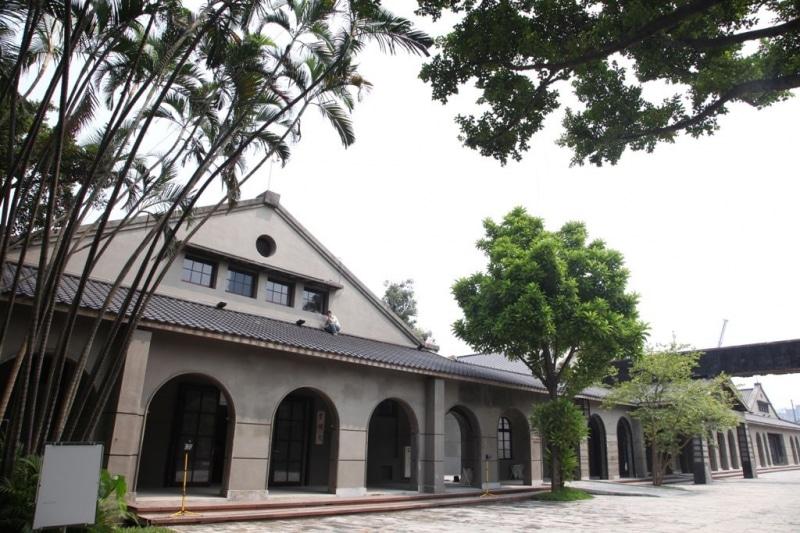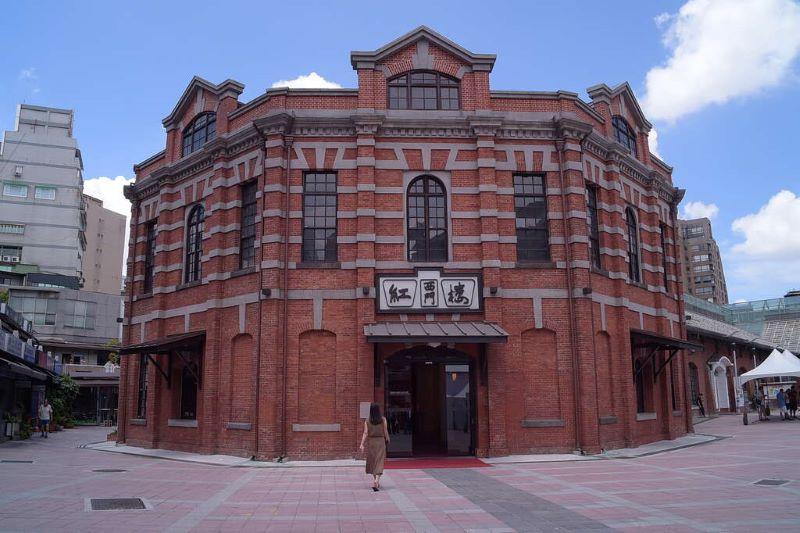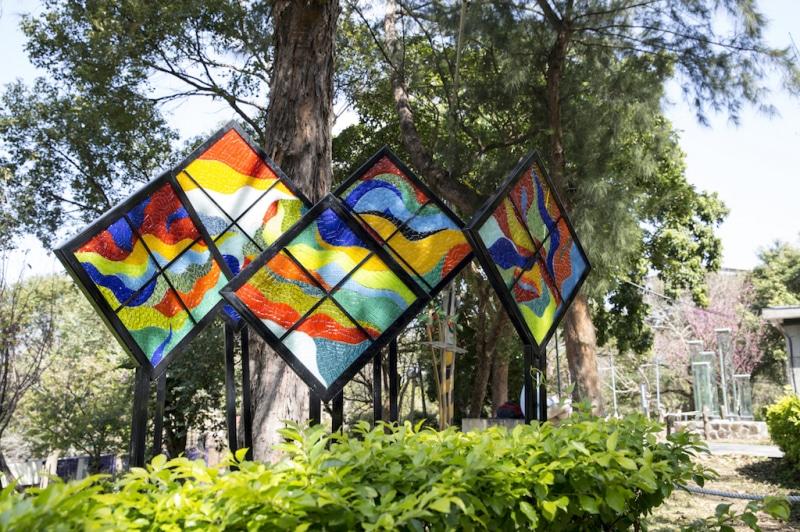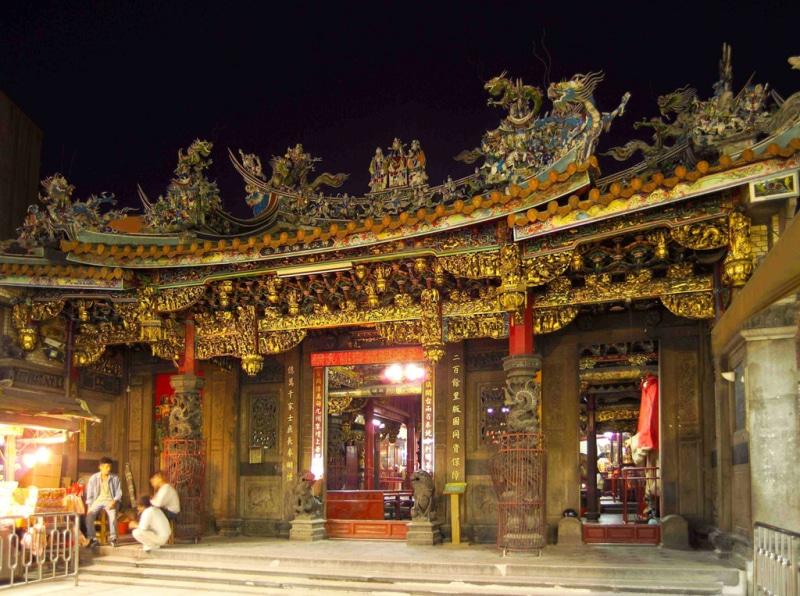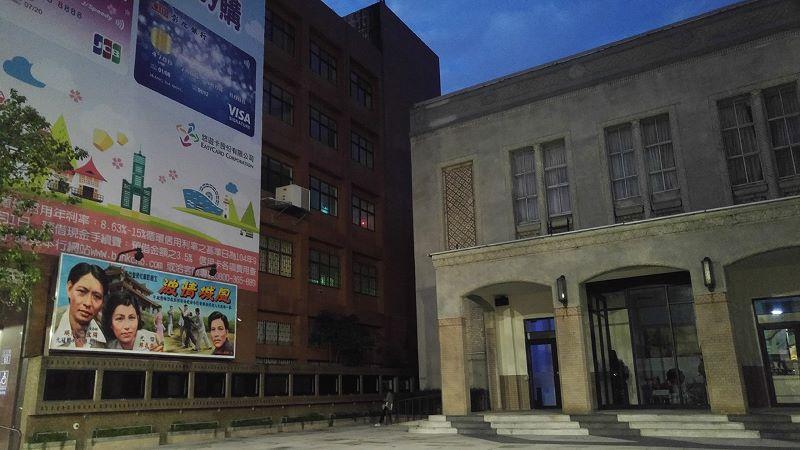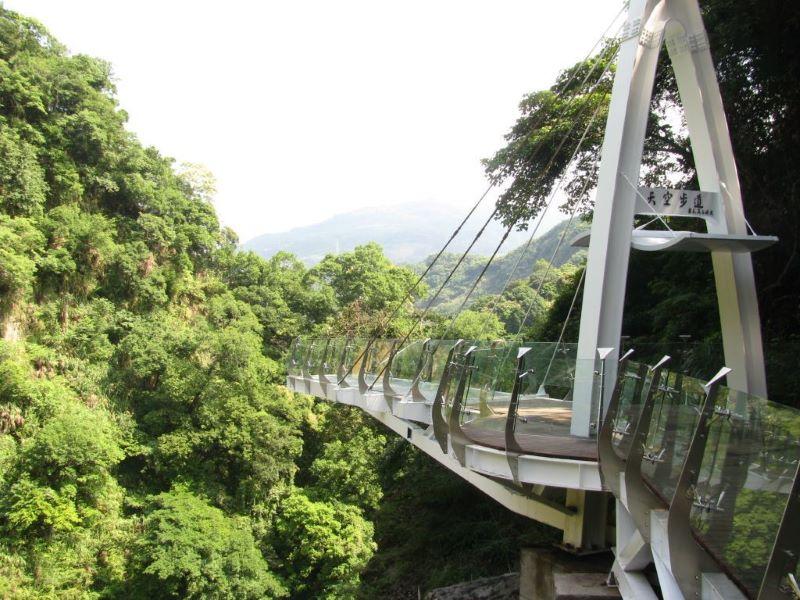Museums, Theaters, Architecture, Taiwan
Removed from Unnamed collection
National Chiang Kai-shek Memorial Hall
This memorial hall was built in memory of Chiang Kai-shek, the first president of the Republic of China. Work on the hall began in 1976, a year after President Chiang passed away. Design by C.C. Yang, who was also the architect for The Grand Hotel, the memorial hall is white with a blue roof, representing the dominant colors in the ROC flag; while the emblem of the Chinese Nationalist Party (KMT) adorns the vaulted ceiling. A bronze statue of Chiang looks west symbolically to the Presidential Office Building and mainland China. The front plaza of the hall is also a major venue for democratic assemblies. https://www.travel.taipei/en/attraction/details/445
Map
Removed from Unnamed collection
Taipei 101 Mall
Located within Taipei 101, the Taipei 101 Mall gathers the world top brands to create a high-end shopping experience. Level 4 of the mall features Singapore-based bookstore Page One and Taipei largest indoor cafe and restaurant area.
Visiting the tallest building in a new city has a natural appeal because it gives us a chance to gain a unique perspective of the city. When you come to Taipei 101, you can take the super-high-speed elevator up to the 89th floor and take in the whole city from a special vantage point. Up there in the clouds you're sure to be captivated and moved by taking in so much of Taipei and it's surrounding area, whether you visit in the daytime or at night. https://www.travel.taipei/en/attraction/details/540
Map
Removed from Unnamed collection
National Palace Museum
The Taipei National Palace Museum is a world-class museum that hosts an eclectic collection of treasures kept by generations of Emperors ruling from the Forbidden City. In WWII, Nationalist troops seized the most important pieces in order to prevent invaders from ransacking China's national treasures. A twist of fate eventually brought these treasures to Taiwan.
The Taipei National Palace Museum is designed in the style of a Northern Chinese palace. The museum is home to hundreds of thousands of historical relics that make up the world's most comprehensive and precious collection of ancient Chinese artifacts. The entire collection covers 5,000 years of China's historical and artistic achievements.
The museum provides Chinese, English, French, German, Japanese, Spanish and Korean language guides and museum-related literature. The museum is a must- see on any visitor's itinerary. https://www.travel.taipei/en/attraction/details/441
Map
Removed from Unnamed collection
National Sun Yat-sen Memorial Hall
Designed by local architect Wang Da-hung, this memorial hall was established in memory of Dr. Sun Yat-sen, the father of the Republic of China. The hall also serves an educational and research role, hosting various cultural and art events throughout the year, including the Golden Horse Awards, Golden Bell Awards, and Culture Awards. The hall is surrounded by a large park, further making it a popular weekend escape for city residents. https://www.travel.taipei/en/attraction/details/446
Map
Removed from Unnamed collection
Dadaocheng Cisheng Temple
Dadaocheng Cisheng Temple, commonly known as the Dadaocheng Mazu (meaning "Mother-Ancestor") Temple, dedicated to the Tianshang Shengmu (meaning "Heavenly Holy Mother"), the guardian of sailors and also known as Mazu or Tianhou (meaning "Empress of Heaven"), is one of the three main temples in Daodaocheng, along with the Fazhu Temple and the Xia Hai City God Temple. "The first door opens to display the beauty of Guanyin Mountain; thousands of ships have navigated over the running waters" is written on the front gate, pointing out the change of its location over the years. Cisheng Temple was originally located at the intersection of Xining North Road and Minsheng West Road back in 1866, across the trading port, with the Bali Guanyin Mountain to its front right, looking onto the bay of the Tamshui River flowing north. In 1910, the Japanese government tore the temple down to re-plot the urban streets. The locals funded the temple relocation to its current address on Yanping North Road, using the original pillars and stones and preserving its appearance since the reconstruction finished in 1914, until today. https://www.travel.taipei/en/attraction/details/717
Map
Removed from Unnamed collection
Songshan Cultural and Creative Park
The 6.6-hectares Songshan Cultural and Creative Park in Taipei’s Xinyi District was completed in 1937 as the Songshan Tobacco Factory, which was one of the seed companies of a monopoly system mandated by the Taiwan Governor-General Office. The premises were one of Taiwan’s pioneers of modern industry, as well as the first professional tobacco plant.
In 2001, the Taipei City Government named the tobacco factory the city’s 99th historic site and converted it into a park comprising city-designated historic sites, historic structures and architectural highlights. For more efficient reuse of space, the Songshan Cultural and Creative Park was built on the historic site as a production base for designers and cultural & creative businesses, as well as a venue for performances and exhibitions. The park introduced to its premises a Taiwan Design Museum and TMSK through partnerships with the Taiwan Design Center and prestigious Taiwanese glasswork label LIULI GONG FANG, respectively, besides a snack bar that was converted from the machinery repair shed. https://www.travel.taipei/en/attraction/details/586
Map
Removed from Unnamed collection
The Red House
The Red House was constructed in 1908 by Japanese architect Kondo Juro, which was the first government-built public market in Taiwan and also the most well-preserved Class III historic building in the nation. The Red House consists of “Bagua" shaped Octagonal Display Hall as the grand entrance for it’s meaning— people visiting from all around the world, a characteristic Cruciform Building as main construction and adjacent South and North squares.
The Red House has been through few functions, shifted from public market, bookstore, cinema, to a theatre. More than a decade has passed since 2007 when Department of Cultural Affairs entrusted Taipei Culture Foundation to manage The Red House as a platform to promote Cultural and Creative Industry in the goal of reviving Ximending’s community. After gathering years of cultural and creative energies, Ximending is now considered as the most iconic location of Cultural and Creative Industry in not only Taipei, but all around Taiwan. https://www.travel.taipei/en/attraction/details/503
Map
Removed from Unnamed collection
Yin Hsi East Gate
The East Gate sits on a granite base pierced by an arched walkway. On the upper half of the gate is a building originally constructed of wood and later rebuilt in concrete. The building is supported by 24 columns on which sit a double-eaved roof with a short upturned ridge that adds to the power of the design. In front of the gate is a stone stele recounting the history of the construction of the Hsinchu City wall. There is also a public square that joins both traditional and modern elements at the front of this major Hsinchu landmark. http://eng.taiwan.net.tw/m1.aspx?sNo=0002109&id=6694
Map
Removed from Unnamed collection
Glass Museum of Hsinchu City
The museum building was reconstructed from Hsinchu Civic Hall that was built as the Japanese royalty residence and a banquet hall in 1936. After Taiwan restored in 1945, the building was utilized by Takeover Committee, American army consultant delegation, and Hsinchu military police station. http://eng.taiwan.net.tw/m1.aspx?sNo=0002109&id=3189
Map
Removed from Unnamed collection
Hsinchu City God Temple
Hsinchu City god Temple (Chenghuang Temple) is regarded as the highest-ranking of all City God temples in Taiwan, due to the superior spiritual power of its City God in protecting the town. In front of the temple is a market with a lot of small stalls selling delicious Taiwanese snacks, including rice noodles, meat balls, thick cuttlefish broth, and Zhuqian Biscuit (Zhuqian is the original name of Hsinchu).
Hsinchu is famous for a number of specialty foods, especially Hsinchu rice noodles, which are produced in Nanshr Village, Hsinchu City. Another famous product of Hsinchu is shiangfen, a traditional cosmetic powder which was used by women throughout Taiwan before the arrival of foreign-style cosmetic products. The powder is also used in offerings to Qiniangma, the guardian spirit of children. Only one store, run by the Tsai Family in Julian Street, still produces this powder. Although there are many stalls from which Hsinchu meatballs can be purchased, many are concentrated around the Chenghuang Temple. http://eng.taiwan.net.tw/m1.aspx?sNo=0002109&id=447
Map
Removed from Unnamed collection
Image Museum
Built in 1933, the Yule Theater was the first air-conditioned theater in Taiwan. The 500-person capacity theater joined both ancient Roman and Arabian motifs to present a vision of grandeur intended to display the national power of the then occupying Japanese government.
The mission of the museum is to preserve the cultural experience of the Guomin Theater and to serve as a shared image space for city residents. In addition to promoting and showing alternative and older movies, the museum archives, displays, and researches cinema-related items and promotes cinema education. https://eng.taiwan.net.tw/m1.aspx?sNo=0002109&id=6882
Map
Removed from Unnamed collection
Xiao Wulai Skywalk
Come to Taoyuan to challenge the limitation of your sense at the first skywalk in Taiwan!
Xiao Wulai Skywalk is located in Taoyuan Fuhsing Township, rose beside the Wind-Rolling Stone and suspended above the Xiao Wulai Waterfall. To fulfill tourists’ dream of walking in the air, Taoyuan City government spent NTD 8 million on it. The shape of skywalk was in a concise design with geometrical pattern, and tempered glass construction in the bottom. The walkway extended in the sky for 11 meters. Standing on the glass platform, 70 meters high above the bottom of waterfall, tourists can admire the beautiful valley and spectacular waterfall scenery with only NTD50. You are welcomed to come and sense the whole new sight with courageous challenge of 70 meters high. https://travel.tycg.gov.tw/en/travel/attraction/723
Map
Removed from Unnamed collection
Zhuwei Fishing Harbor
Zhuwei Fishing Harbor is a fishing port with recreational function in northern Taoyuan; its beautiful scenery also attracted the crew of the TV drama, “PS Man” to shoot here. There is a rainbow bridge at the northern entry of Zhuwei Fishing Harbor. This Nielson-Lohse steel arch bridge has become a popular landmark, making the fishing port more romantic at night.
Visiting Zhuwei Fishing Harbor, you simply have to feast on seafood. Restaurants with seafood directly delivered from the Port are mostly distributed on the southern bank. On the other side, the fishing association has set up an outlet center. Each booth presents quality dishes and skilled cooking. With reasonable prices, seafood lovers should never miss this place! https://travel.tycg.gov.tw/en-us/Travel/Attraction/739
Map
Removed from Unnamed collection
The Cihu Memorial Sculpture Park
The Cihu Memorial Sculpture Park is situated near the Cihu Parking Lot. In the park there are some 100 bronze statues of Chiang Kai-shek’s donated by various localities of Taiwan. This also lets tourists from around the world remember the past glorious feats of Chiang Kai-shek. Among the statues are familiar-looking standing and half-bust bronze statues, which were donated mostly by schools and government organizations. There are also statues of CKS seated and horse-riding. Every statue has its own artistic value. Interconnected foot trails lead to various statues in the park. There are also elegant Chinese garden-style gardens with bridges and water below them. https://travel.tycg.gov.tw/en-us/Travel/Attraction/718
Map


